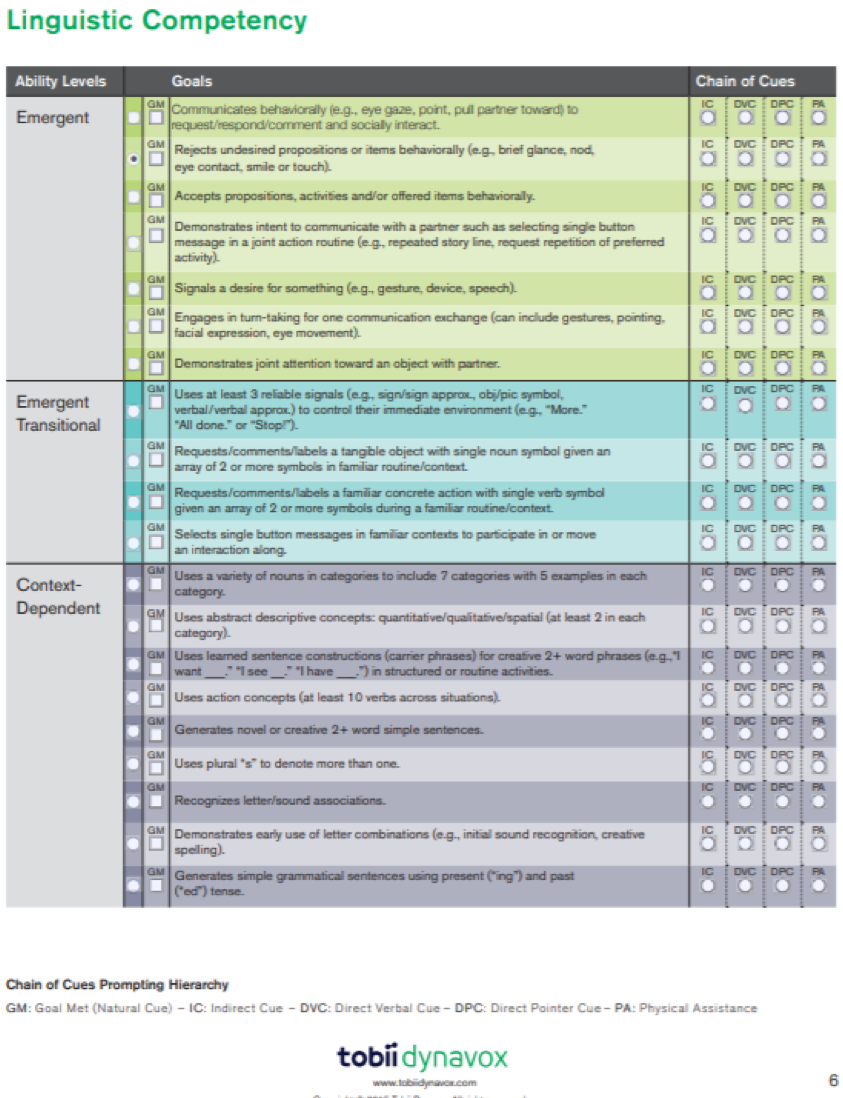by Kylee Osowski, MA, CCC-SLP (Speech-Language Pathologist); NWACS Contributor
NOTE: THE DAGG-2 HAS BEEN UPDATED SINCE THIS BLOG POST WAS PUBLISHED. CHECK OUT THIS POST ON THE NWACS BLOG TO LEARN ABOUT THE DAGG-3.
With the onset of school, September always feels bittersweet. The long, sunny summer days in the PNW slowly begin to dwindle. Warm days out in the evergreens turn crisper. With that depleting amount of sunshine and warmth comes a freshness I eagerly anticipate. For school employees; a time to plan and organize and implement.
Thinking about my upcoming school year, I consider my students with complex communication needs. What have they been doing these past two and a half months?! Were they away on vacation? Did a babysitter watch them? Did they go to day camp? Did they play video games until the wee hours of the morning?
I’m not only curious about their lives outside of school, but as a leading team member to this student’s communication skills, it’s important to know the communication environments they were exposed to and how these environments shaped their communication skills.
One of the first items on my long to-do list will be to schedule a time to talk with parents and caregivers. I not only want to know what their child was up to, but I also want to reconnect. For me, this conversation will serve as a reminder to parents and caregivers how valuable their input and support is for our student’s communication needs.
After checking in with family members, it will be time to do some observations and assessments. I’m starting with the Dynamic AAC Goals Grid-2 (DAGG-2).
The DAGG-2 is a free assessment tool available from Tobii Dynavox meant to determine an individual’s current skills in AAC. The tool can be used by the individual’s team members to analyze strengths and weaknesses and create a plan to support their AAC development.
I like the DAGG-2 because it is so systematic. First, I will gather information on their ability level (i.e., emergent, emergent transitional, context-dependent, transitional-independent, independent) in the five different areas:
Understanding
Expression
Social Interaction
Literacy Skills
Other
Once I have this information, I can clearly see a student’s strengths and areas in need of more support. With this information I’ll want to make sure my student’s goals are aligned with the four communication competencies:
Linguistic- expressing and understanding language
Operational- operating and maintaining the communication system
Social- skills needed to communicate socially
Strategic- strategies to prevent and repair communication breakdowns
These competencies are written in goal format by ability levels. Further, the DAGG-2 provides a chain of cues to make future progress reports easy. The chain of cues can also be used by the team to decide the level of prompting initially needed for student success.
Image of page 6 from DAGG-2 showing goals by ability level and Chain of Cues Prompting Hierarchy
That’s one item on my back-to-school agenda. What’s on yours?



